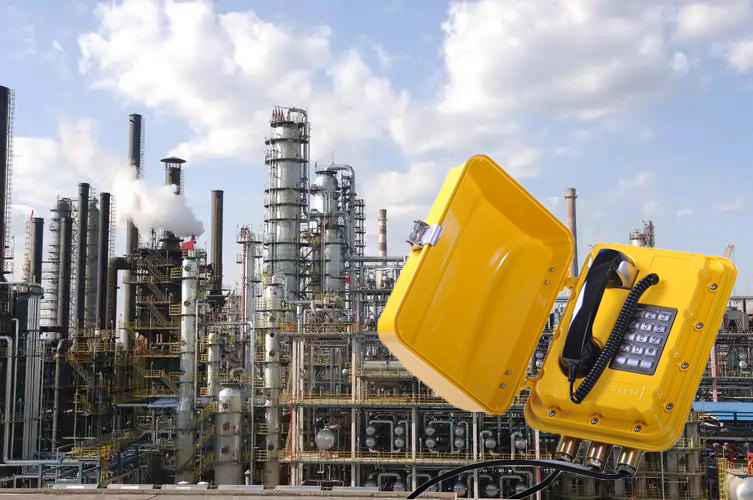A modular communication system serves as a versatile solution for industrial communication. Its scalable design supports growing operations, while its durability withstands challenging environments. Industries like manufacturing and mining rely on these systems to enhance safety and operational efficiency. For example, the manufacturing sector utilizes such systems to automate processes, ensuring consistent productivity and quality.
Key Takeaways
- Modular telephone systems can grow or shrink with business needs.
- They are built tough to work in rough places like mines.
- Features like noise-blocking microphones make them safer and easier to use.
Key Features of Modular Communication Systems

Scalability for Expanding or Evolving Operations
A modular communication system offers unmatched scalability, making it ideal for industries experiencing growth or operational changes. Its design allows businesses to add or remove components as needed, ensuring seamless adaptation to new demands. For instance:
- Educational Institutions: The Weizmann Institute employs modular systems to manage data for genomic research, supporting both academic and operational needs.
- Heritage Sites: At Sagrada Familia, a modular setup ensures uninterrupted communication during ongoing construction, balancing innovation with preservation.
This flexibility ensures that organizations can scale their communication infrastructure without overhauling existing systems, saving time and resources.
Durability for Harsh Industrial and Environmental Conditions
Industries like mining and manufacturing demand communication systems that can endure extreme conditions. Modular communication systems undergo rigorous testing to ensure reliability. Key tests include:
| Testing Method | Description |
|---|---|
| High-Temperature Reverse Bias (HTRB) | Evaluates long-term stability under high drain-source bias, revealing weaknesses and degradation effects. |
| Durability Testing | Assesses resistance to humidity, corrosion, and immersion to meet industrial standards. |
Additional evaluations, such as accelerated aging and waterproof compliance tests, further validate their robustness. These features make them indispensable in environments where durability is non-negotiable.
Customization to Address Specific Industry Requirements
Every industry has unique communication needs. Modular communication systems provide tailored solutions, whether for a factory floor, a warehouse, or a remote mining site. Businesses can select features like noise-canceling microphones for loud environments or ruggedized designs for outdoor use. This customization ensures that the system aligns perfectly with operational goals, enhancing both efficiency and safety.
Advantages of Modular Communication Systems in Industrial Settings
Improved Communication and Coordination in Factories
Factories rely on seamless communication to maintain productivity and adapt to changing demands. A modular communication system enhances operational flexibility by enabling quick reconfiguration of remote setups. This adaptability supports evolving production needs without disrupting workflows.
- Real-time data collection and analysis improve machine performance monitoring and resource tracking.
- Reduced cabling requirements lower installation costs and simplify maintenance.
- Scalability allows for the integration of new devices and processes as operations grow.
- Enhanced coordination among autonomous robots optimizes material handling and transportation.
These features collectively streamline factory operations, ensuring efficient communication and coordination across teams and systems.
Enhanced Safety and Emergency Response in Mining Operations
Mining environments present unique challenges, including remote locations and hazardous conditions. A modular communication system addresses these challenges by providing reliable and robust communication channels. Ruggedized designs withstand extreme temperatures, dust, and moisture, ensuring uninterrupted connectivity.
In emergencies, these systems enable rapid information dissemination and coordination. Workers can quickly report incidents, and supervisors can implement safety protocols in real time. This capability minimizes risks and enhances overall safety. Additionally, the system’s customization options, such as noise-canceling microphones, ensure clear communication even in noisy underground settings.
Reduced Downtime and Increased Efficiency in Warehouses
Warehouses benefit significantly from the operational efficiency provided by modular communication systems. These systems support automation and predictive maintenance, reducing downtime and improving throughput.
| Evidence Type | Description | Impact on Operations |
|---|---|---|
| Throughput | Parts Authority achieved 4x higher throughput. | Increased operational efficiency. |
| Picking and Putaway | 4x higher picking and putaway rates due to automation. | Reduced downtime and improved efficiency. |
| Predictive Maintenance | Use of machine data to predict equipment failures. | Minimized unplanned downtime. |
| Asset Tracking | Real-time location and status updates of assets. | Improved asset utilization and reduced downtime. |
| Real-time Reporting | Unified dashboards for real-time insights. | Better decision-making and proactive issue resolution. |
By leveraging these features, warehouses can optimize logistics, enhance asset utilization, and maintain smooth operations.

